|
|
Post by jetdragon on Nov 27, 2017 4:21:39 GMT 1
Yep most were on Grand National Day Viscount, the Argosy was taken on a different occasion though. I have some more 80's Grand National day shots somewhere - I'll have a trawl around the old albums and see what I can find. here's a couple 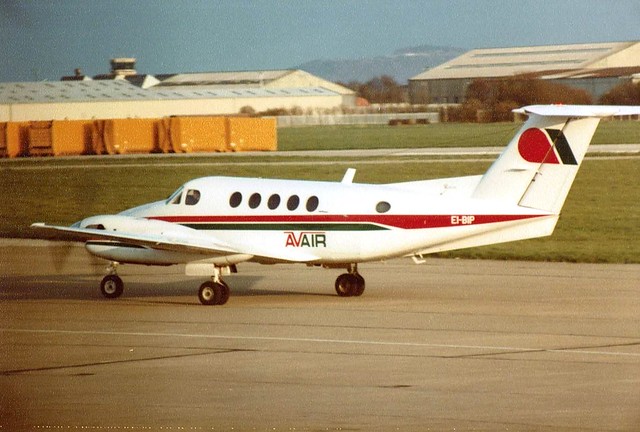
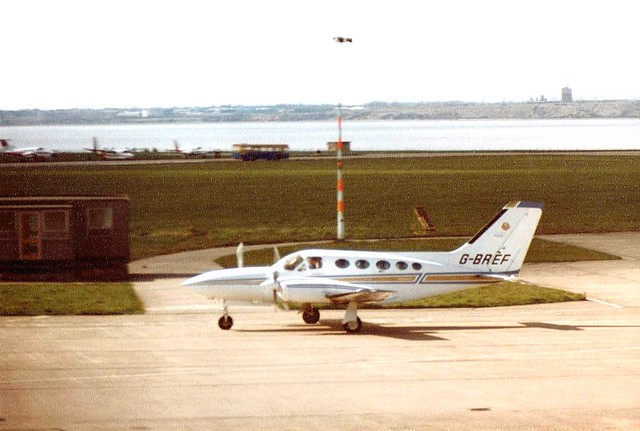 |
|
groth
Full Member
  
Posts: 136
|
Post by groth on Nov 28, 2017 22:46:18 GMT 1
|
|
|
|
Post by radiostationx on Nov 28, 2017 23:57:05 GMT 1
In recent weeks I have been looking out for older images of liverpool speke airport and the surrounding area. The new influx of old slides inspired me to have a dig around and try to find out a little bit more about the airport layout so here are a few more images to add to the pile. This image shows the airport terminal in 1948.  Britainfromabove.com user licence within the perameters and requirements of user licence section 4. Britainfromabove.com user licence within the perameters and requirements of user licence section 4.
(Sorry guys removal of watermark/cropping or the removal of image address is not allowed, fair play.)Here are a few photos taken from above in August 1945, viscount it seems I wasnt that far out when I thought that the fire practice area was an apron or maint area, here I counted around 60 aircraft in that location ! Perhaps a number of aprox 200 parked on the airfield as a whole. There is an aircraft at the threshold of rwy26 about to drepart by the looks of it.  Another image from the same collection 1948?.  Images used are property of Imperial War Museum/American Air Museum and displayed here under their CC general imaging licence usage terms. Images used are property of Imperial War Museum/American Air Museum and displayed here under their CC general imaging licence usage terms.
creativecommons.org/licenses/by-nc/4.0/This photo was donated by another nwan member/source and passed on to me by Beemer. Thanks to the individual who passed this on. The photo (from 1970) was badly damaged in the centre, probably due to folding. Small pieces of the emulsion from the paper were missing. I have made digital repairs as best I can. It shows very clearly both sides of the airport and I have marked the tower location and runways. Downsized for forum display the original image was of very high quality, shame about the damage but thanks once again to the contributor for submitting this for us all to see, a very nice addition.  |
|
|
|
Post by viscount on Nov 29, 2017 9:48:39 GMT 1
The top, 1948 is interesting as it dates the post-war extension of the terminal apron outwards from being an aircraft wide ribbon to allowing aircraft to pass. The outer shape was modified again in 1962, and the 'fingers'(on the final photo) added in 1966. Of interest too is the GCA (Ground controlled approach) radar and vans set up on the lane that runs towards the runway from the main apron. The vans had to be moved and re-setup depending on whether 08 or 26 was in use. The GCA at Liverpool was operational 18th May 1948 until 31st December 1950 when it was moved to Ringway. The system allowed for 'talk-down' of aircraft at times of very poor visibility.
The immediate post-war photo shows USAAF aircraft from the European theatre being processed back to the USA by Lockheeds. I've seen this photo before with some of the types identified - from memory the smaller aircraft are Mustangs and Thunderbolts, the larger aircraft around No.1 hangar on the Western Apron are Liberator bombers. Indeed right until the 1990 a sign could be traced painted on the brick of No.1 hangar warning of prop-wash by running B-24 Liberators. Aircraft production (Halifax bombers) at Rootes (factory is across the very top of the photo) ceased immediately at the end of the war in Europe, so the dispersals are all empty on the South side of the airfield.
What does not show up well on this photo is the site of the catapult used to train Hurricane pilots for CAM ship operations (catapult take-off from Merchant cargo ships on Atlantic Convoy service to deal with long range Fw.200 reconnaissance bombers) at a time when there was a mid-atlantic gap in Allied air coverage and a shortage of escort Carriers. On the late '40s photos the site does show as several concrete bases at the edge of the extended apron at the start of the road across to the GCA site. After 1962's reconstruction of the main apron a concrete square of the catapult area just beyond the outer edge of the apron became the helicopter pad and remained in use until 1986 so can be seen on the 1970 photo.
The third photo, I would suspect is more likely 1947 than 1948, as clearly construction of the apron extension is barely underway. Also there is no roadway across to the runway for the GCA trucks and caravan. Two Dakotas parked on the grass are in both photos - but are the other way around. There were civil operations from Speke more or less right through the war years, the AAJC (Associated Airways Joint Committee) being based at Speke. The Nationalised airline BEA (British European Airlines) was formed at the start of 1947 and for a while took-over the AAJC maintenance facilities at Speke, civilianising Ju-52 and Dakota aircraft - which would explain the aircraft parked out on the grass beside No.2 hangar.
The final, circa 1970 photo was printed as an A3 (twice the size of A4) poster incorporated in a 1983 Schools resource pack produced by the Airport for the 50th anniversary 1933-1983. Therefore the vertical central fold eradicated by manipulation by RadiostationX. My copy is well split and flaking away on the crease, and has classroom pin holes in the corners! When built in 1966 the new runway was designated 10/28 - with the continual slow drift in earth's magnetic north pole, the runway changed designation around the 2nd February 1973. Likewise 17 became 16 on 11th November 1982, however by that time no landings or departures were permitted from the 35 (or now 34) end.
|
|
|
|
Post by optimum1878 on Nov 29, 2017 11:55:48 GMT 1
I can`t believe we let this brilliant airfield disappear forever,everything was in place for an airport of the future,very sad.
|
|
|
|
Post by John Jones on Nov 29, 2017 12:36:21 GMT 1
I can`t believe we let this brilliant airfield disappear forever,everything was in place for an airport of the future,very sad. Yes Dave “everything was in place for an airport of the future” Runway 28\10 was built,no way the old terminal could of coped with with the passengers we have today. Also as you no most of the old apron is still intact as is all the terminal and hangers. John. |
|
|
|
Post by radiostationx on Nov 29, 2017 13:29:32 GMT 1
I can`t believe we let this brilliant airfield disappear forever,everything was in place for an airport of the future,very sad. Hi optimum1878, Only recently when other members started posting old slides and negs on here made me want to find out more about the infrastructure and architecture of the airport. I too cant believe the demise especially between the 1970s and 80s,if there ever was a prime candidate for a cargo handling airport, this was it. Could have been on par with Hong Kong, Frankfurt or Memphis. A customs bonded freeport zone perhaps. Close to Garston Docks, a network of railway sidings lead to within a few hundred mtrs of the airport boundary leading out to the WMCL, close to the Motorway network. Hectare upon hectare of prime industrial land , 4 runways, 2 major hangars plus 2 additional hangars I think. It doesnt get any better than this. Now development is underway for HS2, which will open up the rail network from the North west portion of the WMCL to Europe and beyond. I dont get why the UK Governments did not take advantage of the superb facility. Opportunity missed. |
|
|
|
Post by ronturner on Nov 29, 2017 16:21:01 GMT 1
Mike. You could say this about so many things. I could write a lot of stuff on my feelings about this but it would be serious topic drift.
|
|
Deleted
Deleted Member
Posts: 0
|
Post by Deleted on Nov 29, 2017 17:29:39 GMT 1
How about some de Havilland visitors?  I suppose in the 1960s this was the equivalent of an executive jet charter. G-INFO puts it in the ownership of Metropolitan Air Movements between January 1961 and June 1962. Previously it had been owned by Cambrian.  G-ANPH is shown as belonging to a company called Atlantis Air at the time.  Somebody clearly loved this aircraft. Rarely have a I seen a private aircraft so polished. I think it may have been owned by du Pont at the time of the visit. It was later fitted with Riley engines, but then abandoned at Toussus-le-Noble. As I uploaded it, I realise there is a shadowy figure in one of the seats. Could it be Campbell Black?  For those of you who are not familiar with the name, the story can be read here: link The AA Rapide, in the days when their patrols consisted of a motorbike and sidecar and they would salute you if you had a badge on the radiator! What are those lads doing on the balcony? Oh hang on... |
|
|
|
Post by viscount on Nov 29, 2017 17:34:36 GMT 1
I can`t believe we let this brilliant airfield disappear forever,everything was in place for an airport of the future,very sad. The old (north) airfield disappeared because the site was far too small, hemmed in by industry and housing, nowhere to expand. Ideal for Viscounts and Dakotas but they were from a previous age, not the era of Comets, Boeing 707s, Douglas DC-8s with Concordes and Jumbo jets under construction. THAT IS WHY the new runway was built on a new (although connected) site. Immediately the long taxi from the 27 end to/from the terminal became an issue with the airlines. The terminal built in an age of Dragon Rapides and the DH.86 Express struggled to cope with wide bodies - OK for 'one off' charters with warning so staff could be brought-in, but on a regular basis just clogged the building up with passengers and baggage and cars outside. The flimsy 'International Terminal' inside No.2 hangar was little more than a stop-gap measure, as were the porta-cabin extra gates. Be as sentimental as you like for the nostalgia of the 50s and 60s Viscount, Dakota, Friendship and Britannia, then by the 1980s the ATP, Jetstream, Short 360, Fokker 50 and BAe.146-100 - but aircraft with capacity for under 90 passengers simply were not enough for the Airport to make a profit. The plan in the mid 1960s was to have construction of a new terminal on the river side of the single long runway under way within a few years of completing the new long runway. The political will within Liverpool City Council to back financing the project was not forthcoming and after a decade of politically uncertain years, in 1983 the Airport reached its nadir in terms of passenger throughput. The saviour of the Airport was the creation of the County of Merseyside as a political entity. Within a couple of years a new control tower, fire and rescue facilities, a new apron with Post Office bag sorting shed beside it, and finally in 1986 a new terminal (just as Merseyside County ceased to exist as a political unit). True the size of both apron and terminal were smaller than desired - but the investment proved a turning point in the Airport's fortunes (even though it continued to operate at a loss). Without the move off the original north airfield site and onto the single runway operation south airfield, there is no doubt in my mind that there would be no Liverpool Airport today, not even a Blackpool style GA and Business Airfield. Before people get all romantic about the beautiful art deco terminal, public balcony and wide vista out across the river, in the 47 years it was open 1939-1986 only 11m passengers passed through, it took just 16 years on the south airfield in the initial terminal 1986-2002 to exceed that figure with 12m passengers, while in the 15 years in the current much extended terminal 2002-2017 something in the region of 68m (yes I've checked the maths!) and growing daily. Could and would this have happened on the original traditional airfield and through the art deco building, the "brilliant airfield" of the quote? Sorry but the answer is a resounding NO. Liverpool Airport is still here today because the move of site was both possible and made, partly by government funded money in the 1980s, and private funding since around 2000. |
|
|
|
Post by buspilot on Nov 30, 2017 18:48:52 GMT 1
I can recall playing football at the old South Liverpool FC ground under floodlights in the late 60s/early 70s, when aircraft on approach passed straight over the pitch, their landing lights, especially the Viscounts, being brighter than the floodlights for the pitch, providing extra illumination as they passed over.
|
|
|
|
Post by philglt on Dec 1, 2017 22:40:49 GMT 1
How about some de Havilland visitors? ....and a few more, mostly from my brother's slides:  G-AMYO - De Havilland DH.104 Dove 1B - Morton Air Services - Speke,30/3/63 G-AMYO - De Havilland DH.104 Dove 1B - Morton Air Services - Speke,30/3/63 by Philip Gaulton, on Flickr  EI-AML - DH89A Dragon Rapide - Aer Tauras - Speke, 30/3/63 EI-AML - DH89A Dragon Rapide - Aer Tauras - Speke, 30/3/63 by Philip Gaulton, on Flickr 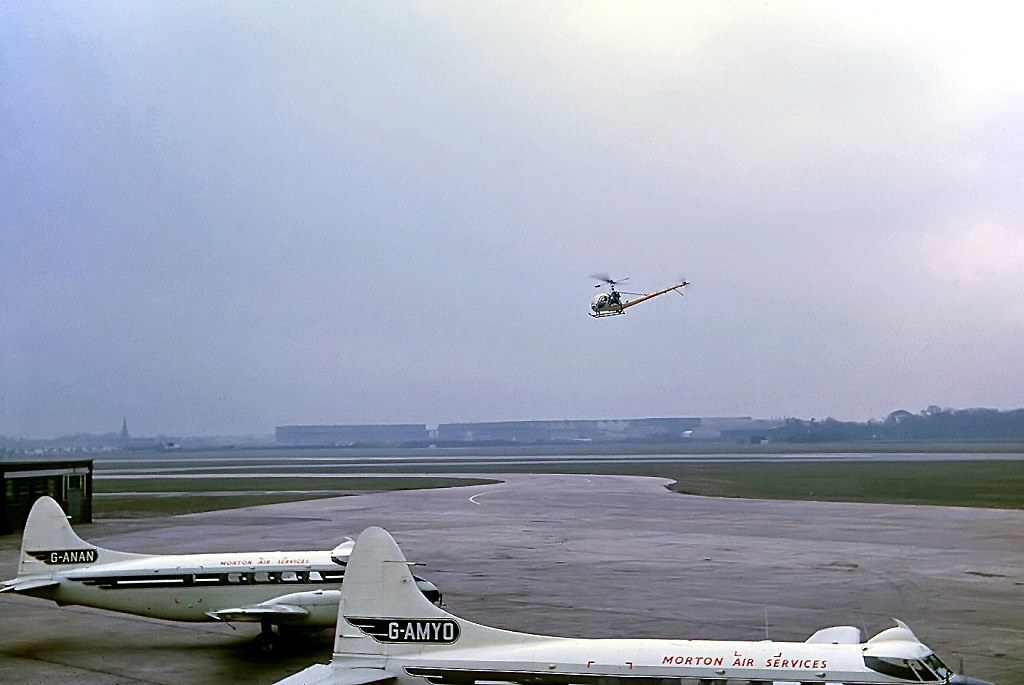 G-ARUP - Hiller UH-12C - Rent-a-Copter and G-ANAN,G-AMYO DH 104 Doves - Morton Air Services - Speke 30/3/63 G-ARUP - Hiller UH-12C - Rent-a-Copter and G-ANAN,G-AMYO DH 104 Doves - Morton Air Services - Speke 30/3/63 by Philip Gaulton, on Flickr 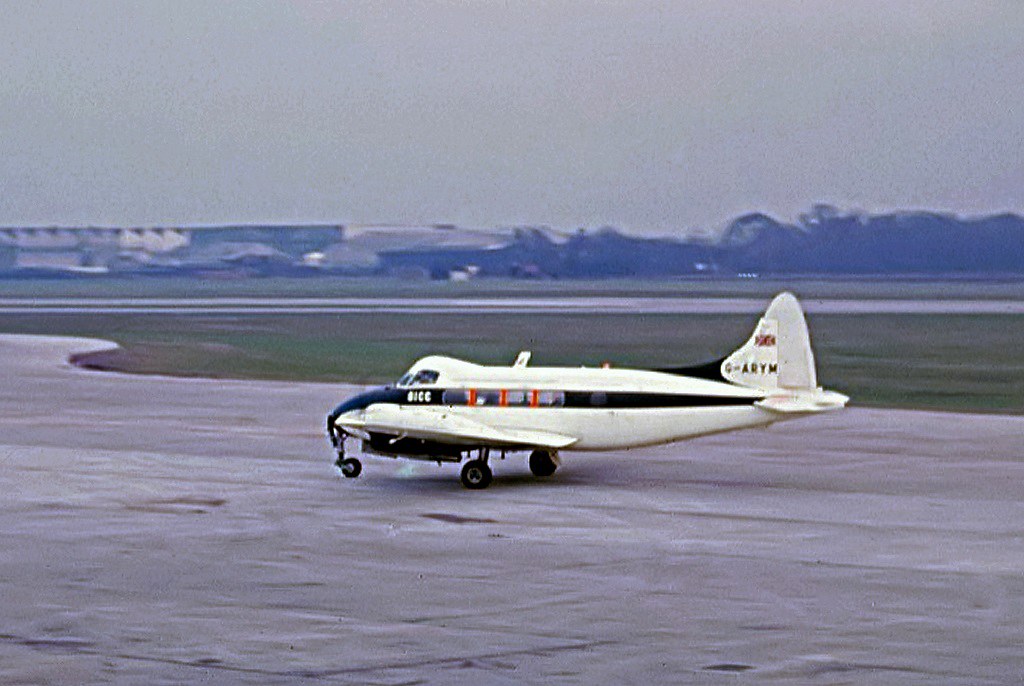 G-ARYM - De Havilland DH-104 Dove 8 - BICC Ltd - Speke '63/4 G-ARYM - De Havilland DH-104 Dove 8 - BICC Ltd - Speke '63/4 by Philip Gaulton, on Flickr 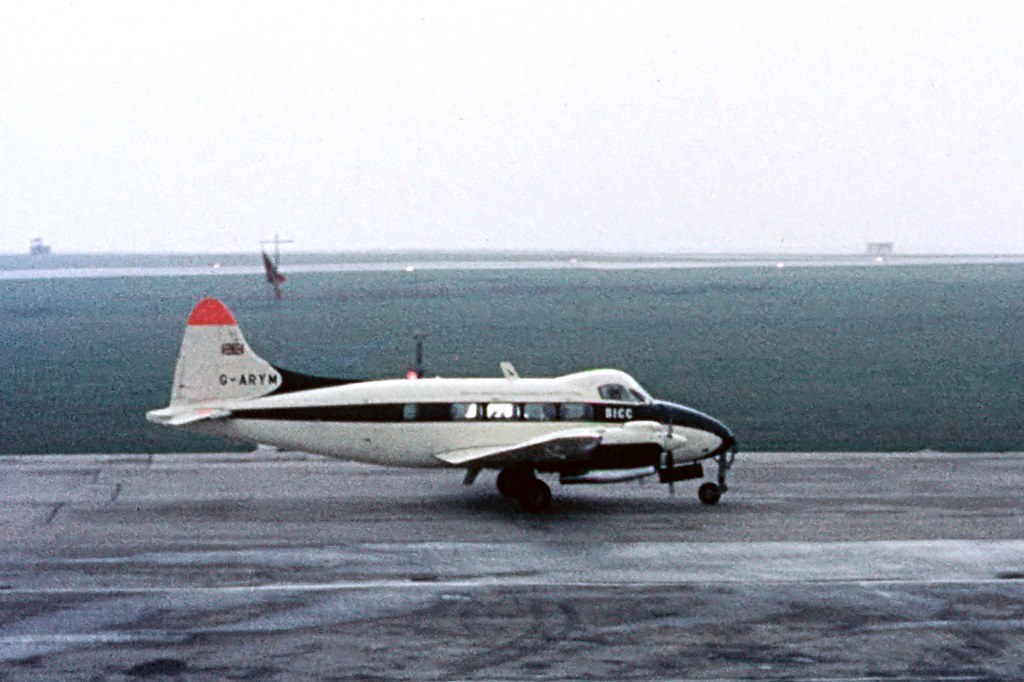 G-ARYM - De Havilland DH-104 Dove 8 - BICC Ltd - Speke '63/4 G-ARYM - De Havilland DH-104 Dove 8 - BICC Ltd - Speke '63/4 by Philip Gaulton, on Flickr 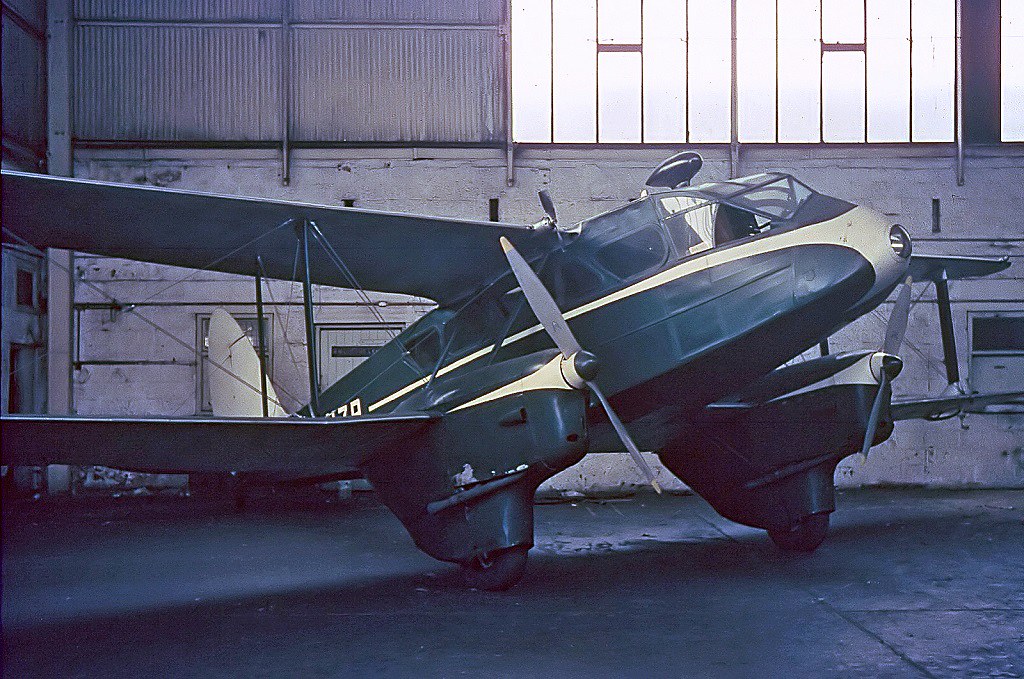 G-ANZP - DH89A Dragon Rapide - Federated Fruit Co. - Speke, 11/8/64 G-ANZP - DH89A Dragon Rapide - Federated Fruit Co. - Speke, 11/8/64 by Philip Gaulton, on Flickr  G-AKJS - DH89A Dragon Rapide - Federated Fruit Co. - Speke, 11/8/64 G-AKJS - DH89A Dragon Rapide - Federated Fruit Co. - Speke, 11/8/64 by Philip Gaulton, on Flickr and one of mine: 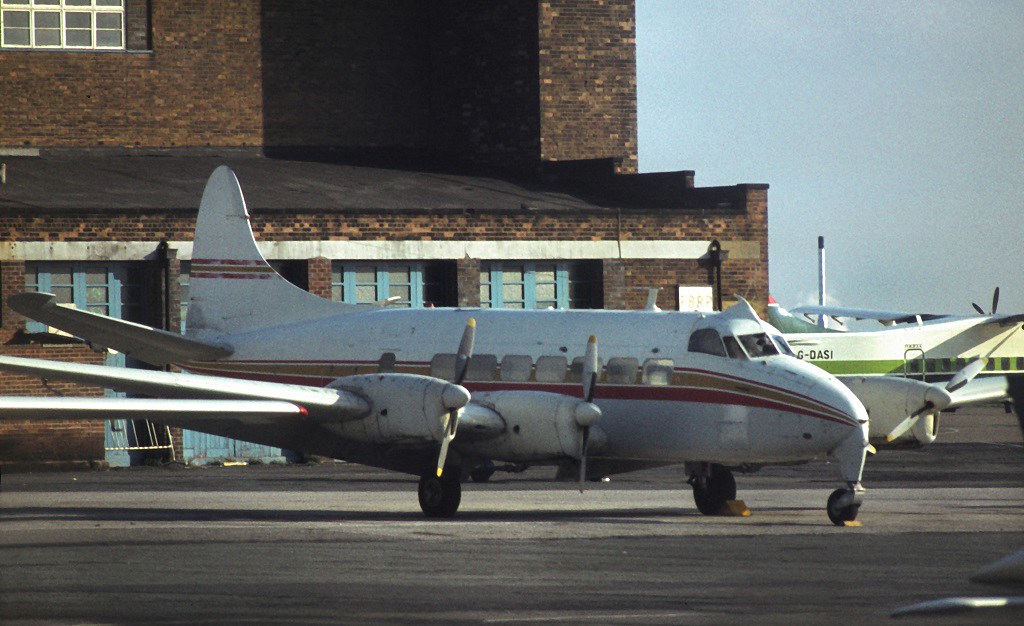 G-AXFH - de Havilland DH-114 Heron 1 , Speke 1986 G-AXFH - de Havilland DH-114 Heron 1 , Speke 1986 by Philip Gaulton, on Flickr Phil  |
|
|
|
Post by ronturner on Dec 2, 2017 7:26:12 GMT 1
|
|
|
|
Post by andyh on Dec 2, 2017 12:06:35 GMT 1
Absolutely loving this thread (and the slides thread). Thanks for sharing and please keep them coming! And if there are any pics from the Manchester Firemen’s strikes of the late 70s I’d love to see them!
|
|
|
|
Post by ronturner on Dec 2, 2017 12:39:15 GMT 1
Glad you like it.
I was inspired by Samba and Philgt, and tutored by Mike radiostationx.
I am stuck on 1963 right now , wading my way through thousands of slides...........
I am hoping some of mine get better when I move on to the years when I had a better camera.
|
|